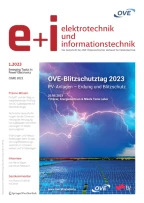Zusammenfassung
Die Arbeitswelt der Zukunft, d.h. die Organisationsentwicklung, die Führungsstruktur- und Infrastruktur-Veränderungen, die Mitarbeiterqualifizierung und -entwicklung sowie die prozess- und kundenspezifischen Ergebnisveränderungen werden entscheidend von der technologischen Entwicklung, d.h. von Industrie 4.0. geprägt sein. Die Verknüpfung von vielen Produktionstechniken über das Internet mit Echtzeitkommunikation ermöglicht eine selbststeuernde kundenindividuelle Fertigung mit niedrigsten Kosten. Je eher diese Veränderungen und Auswirkungen in der zukünftigen Arbeitswelt erkannt werden, umso einfacher wird eine prozessorientierte Anpassung möglich sein.
Abstract
The future of working world—that means, the organization’s development, leading management structures and infrastructure changes, the employees’ qualifications and cognizance, processes, so as the clients’ specifications and demands—will mainly be characterized by a huge technological development that will lead to a new status: Industry 4.0.
The crosslink to several production techniques throughout the Internet, based on real time communications, makes it possible to perform self-acting and governing individual production at low costs.
A process-oriented adaption will be possible and easier to be made, as soon as these changes and effects are recognized in the future working world.





Abbreviations
- ERP:
-
Enterprise Resource Planning
- MES:
-
Manufacturing Execution System
- DMS:
-
Dokumentenverwaltungssystem
- CRM:
-
Customer Relationship Management
- KVP:
-
Kontinuierlicher Verbesserungsprozess
- FMEA:
-
Fehlermöglichkeits- und -Einflussanalyse
- PDCA:
-
Planen – Umsetzen – Überprüfen – Handeln
- OEM:
-
Object Exchange Model
- VDI:
-
Verein Deutscher Ingenieure
- EIM:
-
Enterprise Information Management
- QM:
-
Qualitätsmanagement
- BDE:
-
Betriebsdatenerfassung
- MDE:
-
Maschinendatenerfassung
- FBS:
-
Funktionsbausteine
- EFQM:
-
European Foundation for Quality Management
Literatur
Binner, H. F. (2004): Handbuch der prozessorientierten Arbeitsorganisation. REFA-Fachbuchreihe „Unternehmensentwicklung“. 3. Aufl. München: Hanser Verlag. Copyright REFA Bundesverband e. V. Darmstadt, REFA-Bestell-Nr. 280052, 1041 Seiten. ISBN 3-446-22703-2.
Binner, H. F. (2010): Prozessmanagement von A bis Z. München: Hanser Verlag. ISBN 978-3-446-42303-9.
Binner, H. F. (2013): Prozessorientierte Organisationsentwicklung und Prozessgestaltung mit dem MITO-Methoden-Tool (e-Book MITO®-Praxisbuch). September 2013. ISBN 978-3-00-043264-4.
Bauernhansel, T. (2013): Industrie 4.0: Wie die 4. Industrielle Revolution die Prozesse in der Produktion verändert. In mav Innovationsforum, Böblingen, 16. April 2013.
„Umsetzungsempfehlungen für das Zukunftsprojekt Industrie 4.0“. Abschlussbericht des arbeitskreises Industrie 4.0, acatech – Deutsche Akademie der Technikwissenschaften e.V., 2013.
Author information
Authors and Affiliations
Corresponding author
Rights and permissions
About this article
Cite this article
Binner, H.F. Industrie 4.0 bestimmt die Arbeitswelt der Zukunft. Elektrotech. Inftech. 131, 230–236 (2014). https://doi.org/10.1007/s00502-014-0216-y
Received:
Accepted:
Published:
Issue Date:
DOI: https://doi.org/10.1007/s00502-014-0216-y
Schlüsselwörter
- Megatrends
- Industrie 4.0
- Organisations- und Anforderungsveränderungen
- Auswirkungs- und Anpassungsanalysen
